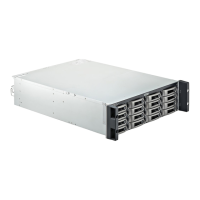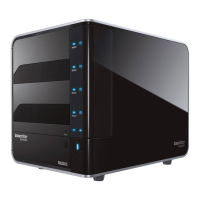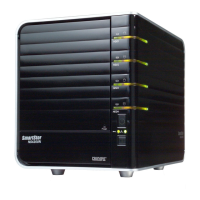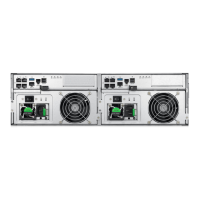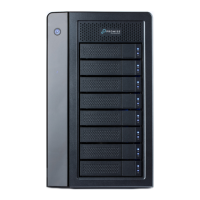233
Technology BackgroundPegasus32 Product Manual
Capacity Coercion
This feature is designed for fault-tolerant logical drives (RAID 1, 1E, 5, 6, and 10). It is generally
recommended to use physical drives of the same size in your disk arrays. When this is not possible,
the system adjusts for the size differences by reducing or coercing the capacity of the larger drives to
match the smaller ones. With Pegasus, you can choose to enable capacity coercion and any one of
four methods.
Enable capacity coercion and choose the method in the Controller Settings menu. See “Making
Controller Settings” on page 25.
The choices are:
• GBTruncate– (Default) Reduces the useful capacity to the nearest 1,000,000,000 byte
boundary.
• 10GBTruncate– Reduces the useful capacity to the nearest 10,000,000,000 byte
boundary.
• GroupRounding– Uses an algorithm to determine how much to truncate.
Results in the maximum amount of usable drive capacity.
• TableRounding–Appliesapredenedtabletodeterminehowmuchtotruncate.
Capacity coercion also affects a replacement drive used in a disk array. Normally, when a physical
drive fails, the replacement drive must be the same capacity or larger. However, the capacity coercion
feature permits the installation of a replacement drive that is slightly smaller (within 1 gigabyte) than
the remaining working drive. For example, the remaining working drives can be 80.5 GB and the
replacement drive can be 80.3, since all are rounded down to 80 GB. This permits the smaller drive to
be used.
Without capacity coercion, the controller does not permit the use of a replacement physical drive that is
slightly smaller than the remaining working drives.

